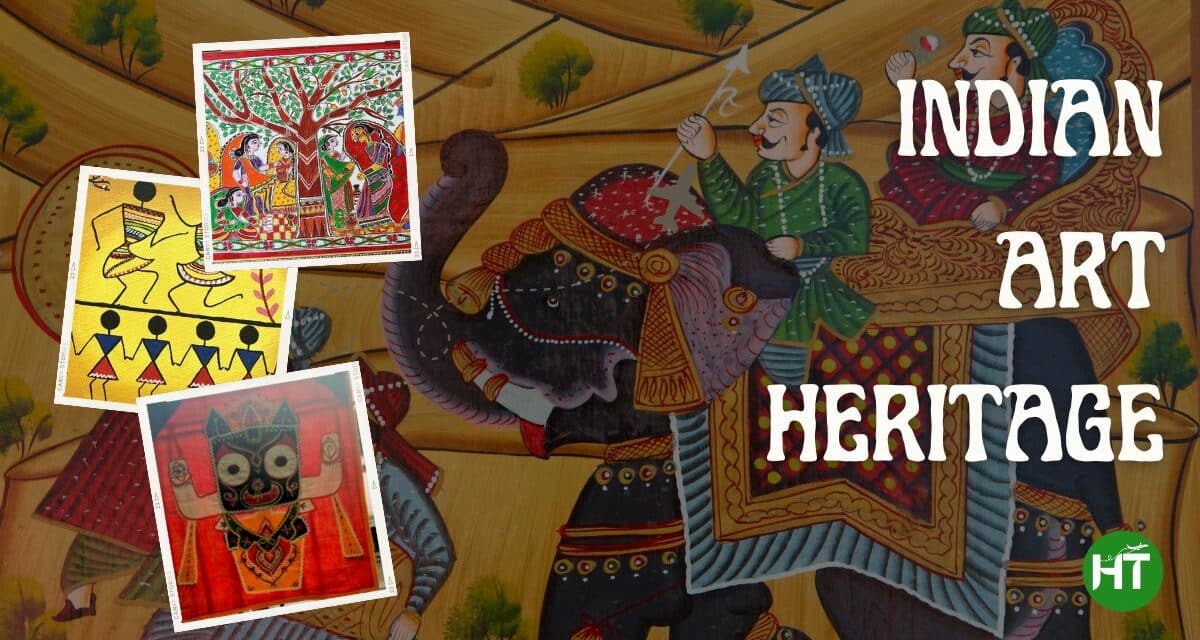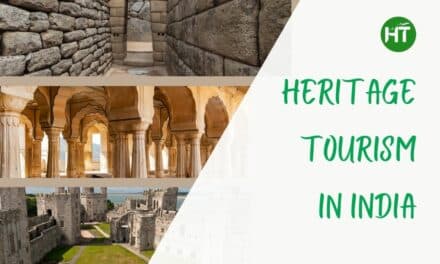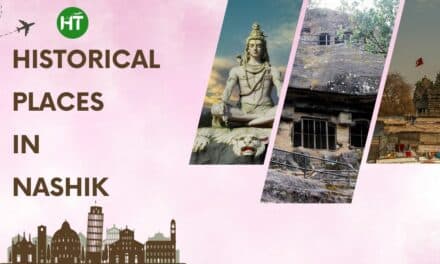Indian art heritage plays a significant role in our Indian History. Once upon a time, Arts were the language of Ancient Peoples. Indian Arts gave much evidence of Ancient Period cultures, practices, religions, habits, and physical structure.
There are various types of Indian Arts forms, including paintings, sculpture, pottery, woven silk, and textile arts.
Indian Art Heritage is extended all over its subcontinent, which is now separated into countries India, Pakistan, Bangladesh, Sri Lanka, Afghanistan, and Nepal.
The main element of Indian Art is its proficient design which you can notice in the modern traditional arts. Indian art was discovered in the 3rd millennium BCE settlements of prehistoric.
Indian arts carry evidence of different religions like Hindu, Buddhist, Jainism, Sikh, and Islam. Irrespective of historical attractions of India, Indian art and culture plays a significant role.
Top List of Indian Art Heritage
Art Heritage signifies the valuable arts, monuments, sculptures, scripts, and archeological sites. Many art museums are there in India according to Historical Survey collected documents of arts heritages of India. Now it’s time to know some Top Indian Art Heritages.
- Madhubani Paintings
- Warli Paintings
- Pattachitra
- Kalamkari
- Tanjore Paintings
- Elephanta Caves
Madhubani Paintings
Among top Indian Art Heritages, Madhubani Paintings is the most popular. It sprouted from the Madhubani district of Bihar, India. It is a prehistoric art design. Madhubani art is also called Mithila Art. This art is also popular in Nepal and India.
Madhubani Paintings present the picture of human beings, birds, animals, trees, etc. Madhubani art is drawn with natural colors like flowers, cow dung, bamboo, and the paste of rice.
Madhubani paintings represent the ancient period information of Hindu religious occasions, marriages, and Upanayana. The most impressive thing you will notice in Madhubani Art is the geometrical shape.
Women of Mithila and Madhubani is the creator of these paintings. If you carefully notice, you will find to see that not a single is the Madhubani Paintings.
The gaps are filled with flowers and designs. Now also, in Mithila and Bihar, these paintings are still alive, and women are working for them. This art has 5 styles which are Bharni, Katchni, Tantrik, Godna, and Khobar. Madhubani Paintings has received national awards.
Warli Paintings
The tribal people of Maharastra invented Warli Painting. And now Warli Paintings is popular in that region. The name Warli came from the Warli tribe, which is the largest tribal group in India.
This Indian Art Heritage is folk style. Warli’s art visualizes Mother’s nature and the lifestyle of the tribes, mainly farming. Warli artists used the caves and walls of their mud huts to draw Warli Paintings.
Warli tribe admires the wildlife resource and the elements of nature. Warli paintings are drawn in geometric shapes, which is a circles, triangles, and squares.
Every geometric shape of warli paintings has a meaning. Circle defines the sun and moon, Triangles define the hills and trees, and Square defines the piece of land.
Tarpa dance is the main dance of the Warli tribe, which you can see in many wall paintings. In the Tarpa dance form paintings in the center, they draw the Tarpa instrument and the warli tribe dance in a round sequence.
The dye they used for drawing is the water mixture of rice flour with gum and the chewed bamboo stick for brushes. Artist Jivya Soma Mashe popularised Warli art from all over India.
Pattachitra
Pattachitra is the oldest traditional Indian Art Heritage. This art design of West Bengal and Odisha is very popular. The name Pattachitra means in Sanskrit is Patta is called “cloth,” and Chitra is “picture .
”The pattachitra is cloth-based art, forecasting the mythological narratives and ancient folktale details. Artform of Pattachitra in West Bengal and Odisha portrays different pictures.
There are two types of Pattachita which are Bengal Pattachitra and Odisha Pattachitra.
Bengal Pattachitra–
Bengal Pattachitra designer is called a “Patua .”It is the artistic heritage of West Bengal. The topic shown in the art of Bengal Pattachitra is the religious stories of the Goddess of Durga. Some other aspects of Bengal Pattacitra are Durga Pat, Chalachitra, Tribal Pattachita, and Midnapur Pattachitra. In National Museum of Ethnology of Lisbon collected the West Bengal Naya Village Pattachitra.
Odisha Pattachitra-
Odisha Pattachitra is the traditional art heritage of Odisha state of India. It is the art presentation of the Hindu religious story of Vaishnava and lord Jagannath. Among the best Indian Art Heritage, the Odisha Pattachitra is very famous.
The art dye is natural colors, charitable, kala sankha, and geru with creative motifs. The artist of Pattachitra does not use pencil or charcoal and draws with brushes.
You can notice these paintings in different themes– Jagannath paintings, Vaishav Paintings, Bhagabat Paintings, Ramayana Paintings, Saiva Paintings, Ramayana Paintings, Saiva Paintings, Shakta Paintings, Ragachitras, Bandhachitras, Yamapati, and Navagunjara.
Kalamkari
Kalamkari is both a modern and old Indian Art Heritage. This art form of the Andhra Pradesh and Telangana has a traditional attraction. Kalamkari is hand-painted art in Cotton cloths. Srikalahasti and Machilipatnam are the painting styles of Kalamkari art.
The artists use natural colors in Kalamkari art. The word Kalam means pen, and Kari means to design. In Kalamkari Paintings, artists use the pen to draw free-hand designs.
This art form describes the story of the Indian epic Mahabharata and Ramayana. In a recent notice, this art is also describing the story of lord Buddha.
There are 23 processing steps to complete this total art – dyeing, bleaching, hand paintings, block paintings, starching, cleaning, fixation, etc.
In the Modern art period, Kalamkari paintings are very easy, and printing is a digital process.
Now it is famous all over India. Artists are using Kalamkari art design in dupattas, blouse pieces, and also in silk, mulmul, and synthetic sarees. Kalamkari is now a trendy design in modern India.
Tanjore Paintings
Tanjore is the old name of Thanjavur, a town in Tamil Nadu, India. For this reason, Tanjore paintings are also known as Thanjavur paintings which is one of the famous and evergreen Indian Art Heritages. Chitragara and the Nyadu was the inventor of these Paintings.
Tanjore paintings are the artwork of South India State Tamil Nadu, India. This art form has been practiced since 1600 AD. Tanjore Painting’s main motive to present through art is south Indian classical dance, music, literature, temples, and Hindu.
The eye-catching thing of gold coating is the attraction of Tanjore Paintings. Paintings are much more expensive, their rich colors, glittering gold foils, glass beads, and precious gems.
Sikhs, Muslims, and Buddhists also use this art form to relish their culture and religions. Tanjore paintings are drawn in Wooden plank, which is called Palagai Padam.
In the modern era, there are some changes in the materials used in Tanjore paintings. Nowadays, artists are using plywood instead of teak wood, synthetic colors, and adhesive replacing natural color and Arabic gum.
Elephanta Caves
In 1987, UNESCO assigned Elephanta Caves as a World Heritage site for the art inside of the caves. Elephanta Caves is located on the Elephanta Island of Maharastra, India.
The specialty of Elephanta Caves is rock-cutting sculpture art presenting the iconography story of Hindu and Buddhist gods. Solid basalt is the rock type of cave. Elephanta Cave is one of the popular tourist attraction mostly for Indian Art Heritage.
Rock cutting sculpture of Trimurti Sadashiva, Nataraja, and Yogishvara is archetypal of Elephanta caves. Now, much art is damaged in the caves. Colonial Portuguese gave the name Elephanta Caves after finding the elephant rock-cutting art in the caves.
In the middle of the 5th and 6th AD, rock-cut Elephanta Caves were built. Now, these caves are under the development of the Archaeological development of India.
Conclusion
India is a hub of Indian Art Heritage. In this article I’m gonna cover Indian Art Heritages. If you are an aesthete, then you should visit the Art Museum all over India where you will find to see many Ancient and modern art and sculptures. Names of some Museums for Archaeological Surveys – New Delhi National Museum, Kolkata Indian Museum, Chandigarh Government Museum and Art Gallery, Mumbai Prince of Wales Museum, Thrissur Archaeological Museum, Odisha State Museum, New Delhi National Gallery of Modern art, Kolkata Museum of Modern Art, etc.
Who is the Originator of Indian Art?
Raja Ravi Verma is the originator of Indian Art.
Which Paintings give positive vibes in the house?
Tanjore Paintings of Tamil Nadu, India, gives positive vibes in the house.





